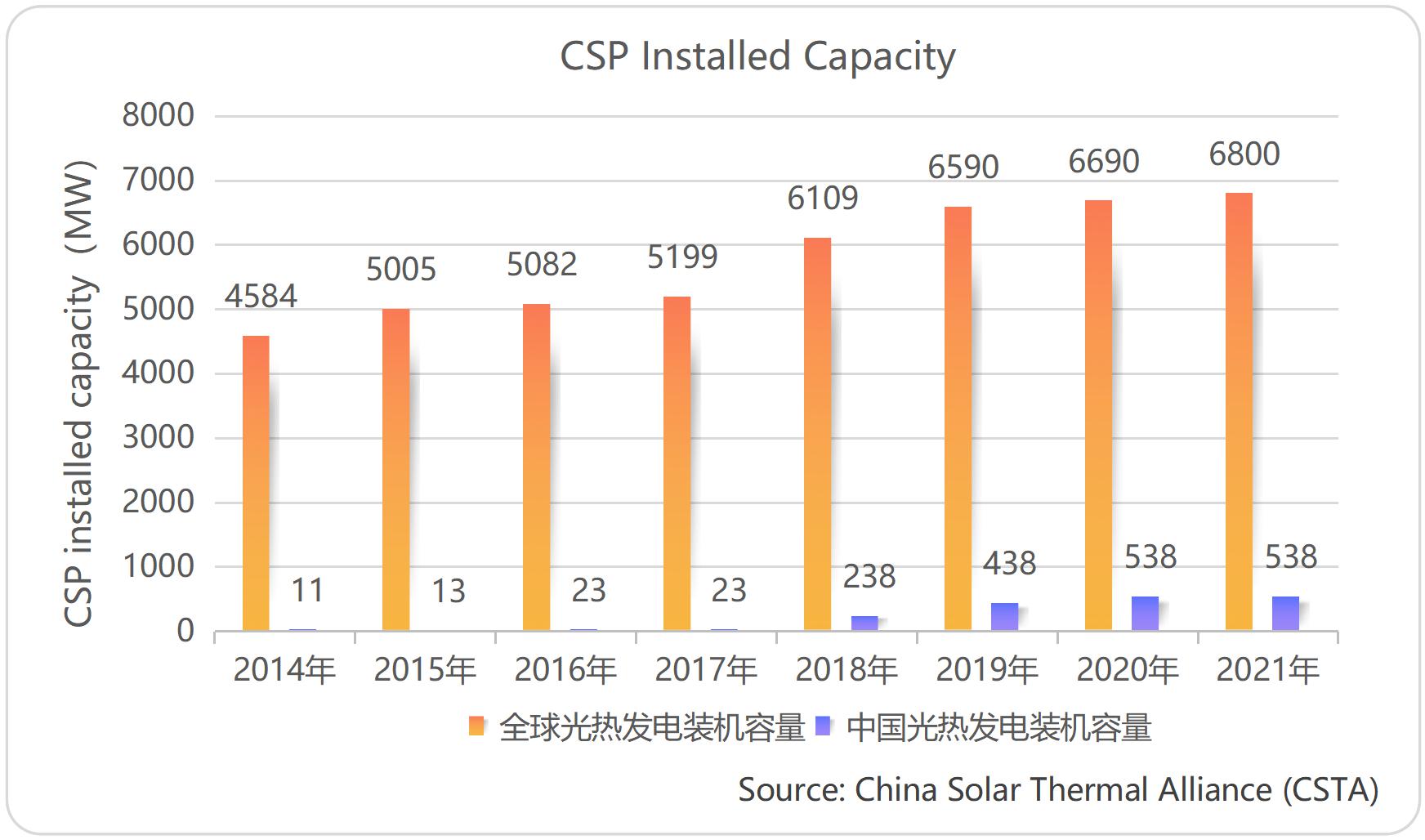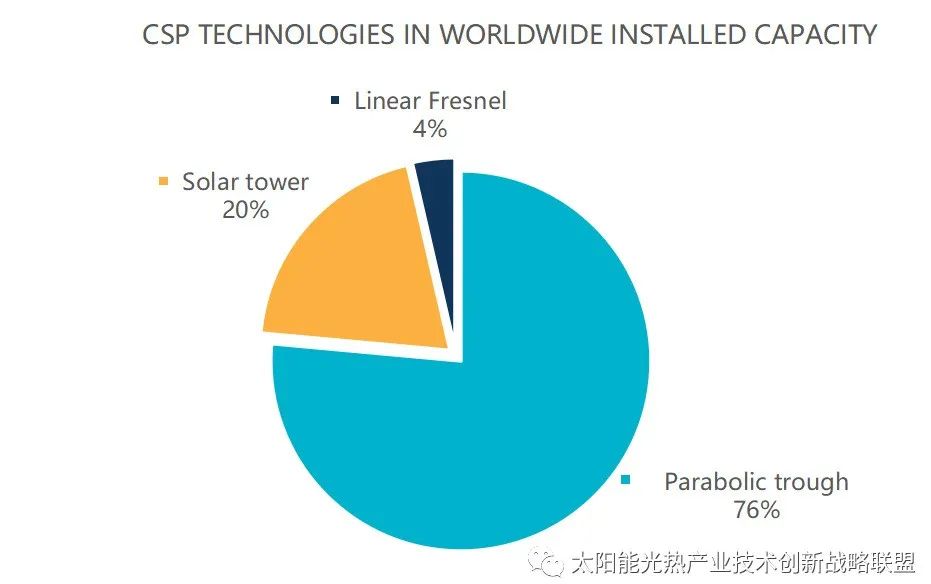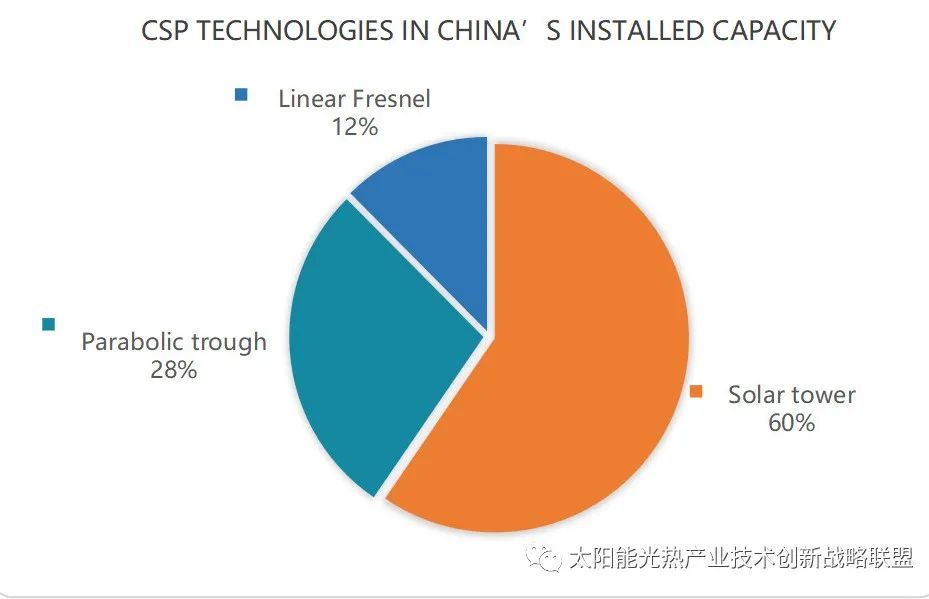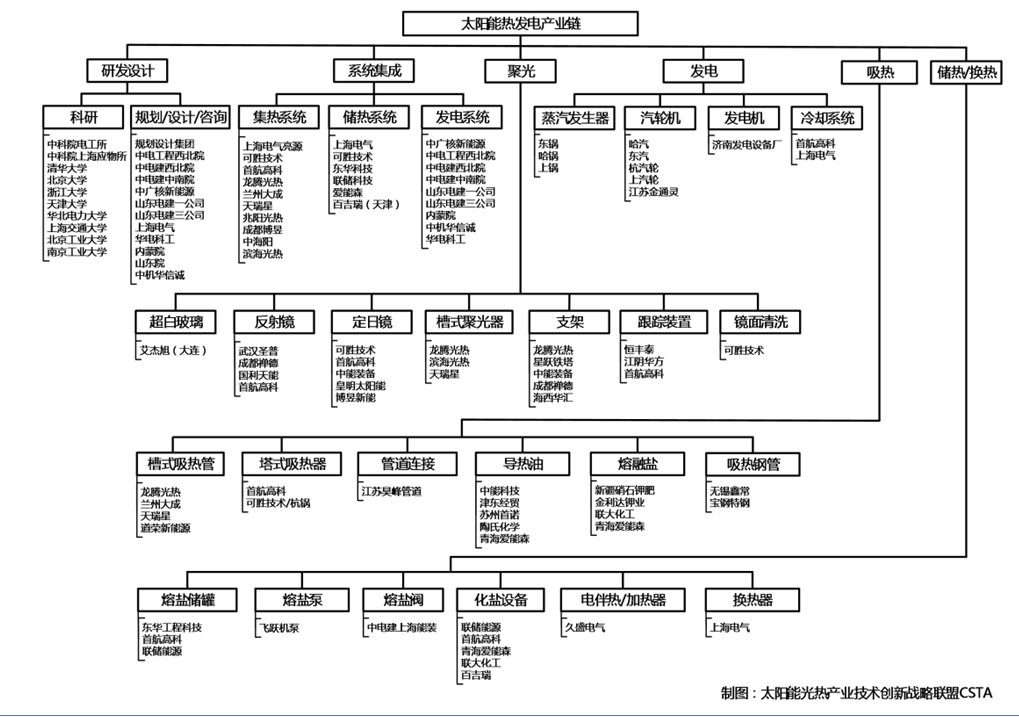Recently, the Blue Book on China’s Concentrating Solar Power Industry in 2021 was released, and the report was jointly drafted by the China Solar Thermal Alliance (CSTA), the Specialized Committee of Solar Thermal Power Generation of the China Renewable Energy Society, and the Zhongguancun Xinyuan Solar Thermal Technology Service Center.
Blue Book on China’s Concentrating Solar Power Industry in 2021 (hereinafter referred to as the Blue Book) comprises the following nine chapters: Development Opportunities and Positioning of Solar Thermal Power Generation, Development of the Market for Solar Thermal Power Generation, Operations of Solar Thermal Power Demonstration Projects in China, the Solar Thermal Power Industry Chain in China, Overview of China’s R&D Projects for Solar Thermal Power Generation, Investment Costs of Solar Thermal Power Generation, Carbon Emissions in the Whole Life Cycle of Solar Thermal Power Plants, Challenges and Countermeasures for Solar Thermal Power Development, and Appendices.
Concentrating Solar Power (CSP, also as solar thermal power, solar thermal electricity) is a process that converts solar energy into thermal energy and generates electricity through thermal power conversion. The State Council’s “Action Plan to Peak Carbon Dioxide Emissions before 2030” clearly proposes to: actively develop solar thermal power generation, and promote the establishment of comprehensive renewable energy power generation bases for wind, solar and photovoltaic power; accelerate the construction of new power systems; after the withdrawal of national subsidies, build solar thermal power generation projects at a certain scale in areas with high-quality resources, through such means as the integration of wind and photovoltaic power generation bases;and give full play to the regulating role and systematic supporting capacity of solar thermal power, to ensure the sustained development of the solar thermal power industry.
According to the Blue Book, from September 19, 2021, to January 4, 2022, China’s first large-scale commercial solar thermal demonstration power plant, CGNPC Delingha 50MW Parabolic Trough Power Plant, kept continuous operation for 107 days, securing a leading position at home and abroad by breaking the previously longest 32.2-day record of continuous operation in 2020. This fully illustrates the great advantage of CSP plants; with the long duration and safe thermal storage system, it does not depend on the weather conditions.
According to statistics of the China Solar Thermal Alliance, by the end of 2021, the total installed capacity of global solar thermal power generation reached 6.8 GW, and the figure in China was 538 MW (only including power generation systems at or higher than the MW scale).

Figure: Development ofworldwide and China’s installed CSP capacity from 2014 to 2021
Among them, the installments empowered by parabolic trough, solar tower, and Linear Fresnel technologies respectively accounted for 76%, 20%, and 4% in major countries and regions worldwide. In the installed capacity of CSP in China, the solar tower technology accounted for about 60%, the parabolic trough-type technology about 28%, and the linear Fresnel technology about 12%.


The Blue Book summarizes the operational status of seven solar thermal power demonstration projects in China and one solar tower plant in a multi-energy complementary project. It’s worth noting that these power plants are connected to the grid at different times and have different technical indicators such as energy storage hours, but each plant is gradually improving its performance and power generation through continuous elimination of deficiencies and the accumulation of operational experience.
For example, Qinghai Supcon Solar Tower Plant constructed by Cosin solar reached or exceed the design value of generation in most of the months. The accumulated electricity generated from Sep. to Dec.2021 reached 60,991,200kWh.
The molten salt thermal storage system of Inner Mongolia Urat 100MW parabolic trough plant put into operation since July 2021, and it realized the output of 0.22billion kWh from Jan. to Oct. 2021, with the daily highest generation of 2,128,000kWh.
The Blue Book points out that the main feature of China’s solar thermal power industry chain lies in its primary support by the easy-to-acquire, safe, and abundant raw materials, such as steel, cement, ultra-white glass, high-temperature materials for heat absorption/transfer/storage (thermal oil and molten salt), insulation materials, etc., which drive the development of core equipment in the industry chain with independent intellectual property rights. According to incomplete statistics of the China Solar Thermal Alliance, in 2021, the number of enterprises and institutions engaged in the product and service segments in China’s industry chain related to solar thermal power generation reached nearly 550;among them, there were about 320 enterprises engaged in the businesses specific to the solar thermal power generation industry,such as those involved with the systems for solar concentration and heat absorption/transfer/storage, accounting for about 60% of the total number of enterprises in this industry;and the number of enterprises engaged in the light concentration is the largest, about 170. In China, several production lines have been established for special components and equipment for solar thermal power generation, which empowers the country with the supply capacity to support the large-scale development of solar thermal power generation。China’s annual supply can meet the installation demand for 2 to 3GW solar thermal power generation projects.

Figure: The main value chain and representative enterprises and institutions in China’s CSP industry
The Blue Book points out that solar thermal power generation helps to configure large-capacity, long-cycle, safer, and low-carbon energy storage systems.With the use of conventional turbine generator sets, the systems are characterized by rotational inertia and grid-wide synchronization machine。As a flexibly dispatchable power source,such systems highly meet the currently urgent need for fast peak-regulating power sources to ensure safe and stable operation of the power grid,in the present context of a high proportion of unstable renewable energy power supply to the grid. These systems can lay a safe and stable foundation for the construction of a new energy-based power system.
The Blue Book recommends that the relevant national departments should clarify supportive measures for the R&D of core original technologies for solar thermal power generation, so as to safeguard China’s cumulative achievements in solar thermal power generation technology since the 11th Five-Year Plan, to keep up with the international pace, and to keep making breakthroughs while maintaining the country’s technological leadership. In addition, China needs to: keep improving its technology for integrating solar thermal power plants; maintain and continue to make use of its achievements at this stage by building large-scale projects; continuously improve the overall design capability, operation, and maintenance level in the second generation of solar thermal power generation technology;improve the manufacturing capability for the core components, equipment, and key accessories; cultivate engineering talents; and eventually secure the country’s leading position in the field of solar thermal power generation in terms of related technology,costs, and scale, just as what it has achieved in the fields of wind power and photovoltaic industries. In the end, efforts should be made to play the due role of such technologies in the realization of China’s two carbon-related goals as soon as possible.
The Blue Book is available for free download at:Blue Book on China’s Concentrating Solar Power Industry in 2021